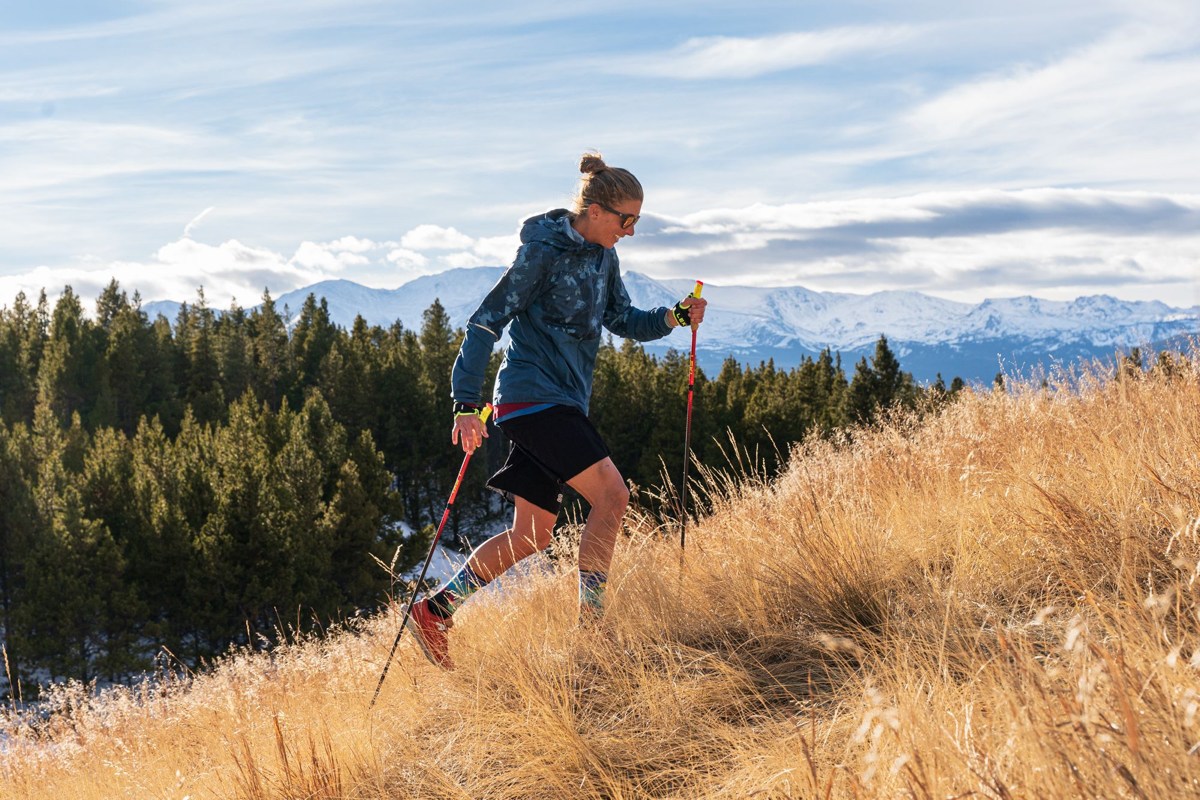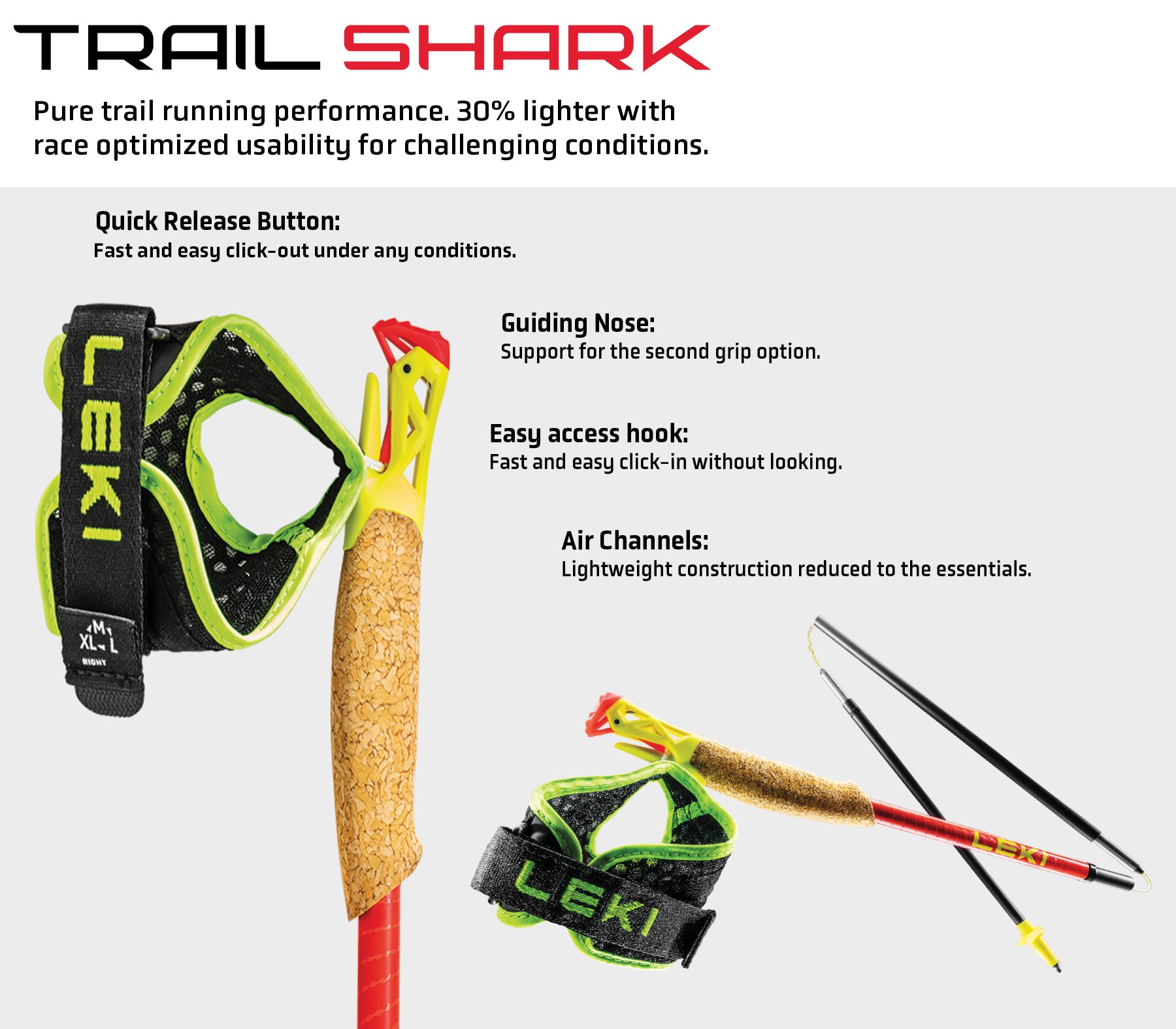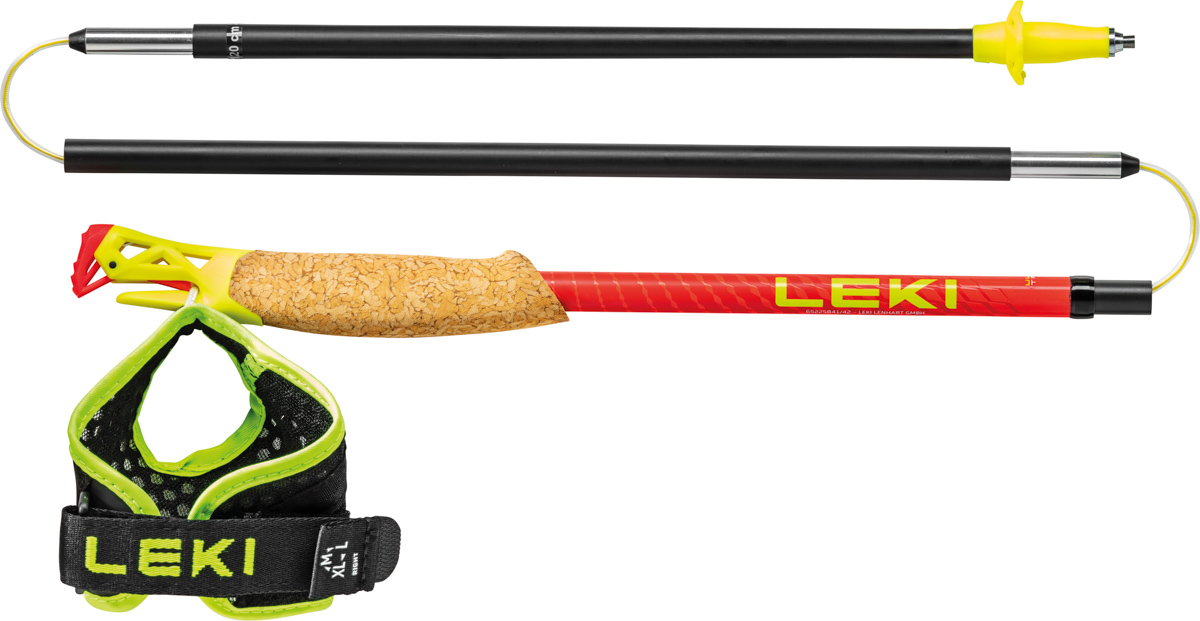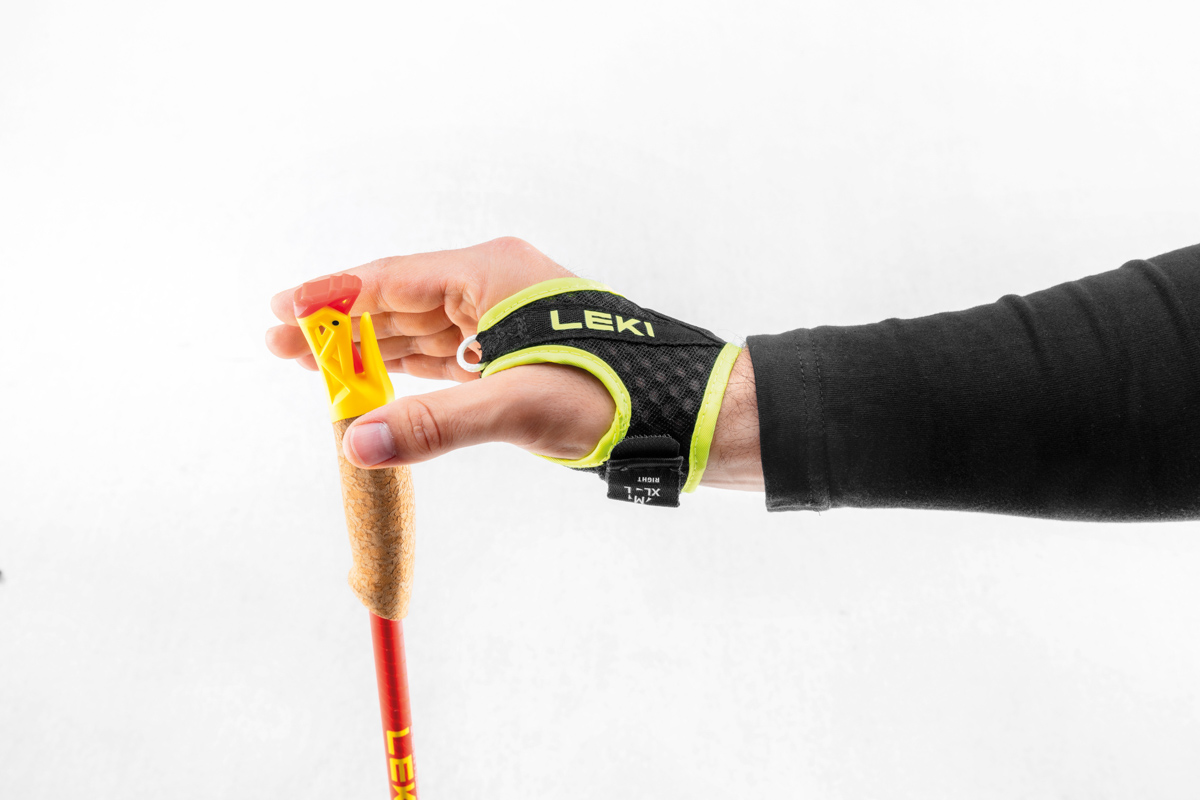When it comes to moving quickly and smoothly over difficult mountainous terrain, it’s hard to deny the advantage that poles can provide. Founded in 1948, LEKI entered the pole market with a commitment to creating improved ski pole grips and baskets. In 1974, they created the world’s first adjustable hiking pole, and in 2013, LEKI became the first company to develop poles 100% for trail running.
LEKI continues to advance pole technology with innovation, quality, enthusiasm, excellence, partnership, and responsibility in order to create the ultimate tool for training and racing. Top ultrarunning athletes, such as Courtney Dauwalter, Sabrina Stanley, François D’Haene, and Dylan Bowman, all turn to LEKI for their poles.
The LEKI Ultratrail FX.One Superlite poles, the flagship of the five-model trail running collection, are reduced to the essentials and designed to meet the specific needs of runners. Less means faster, and the Ultratrail FX.One Superlite has everything you need in a pole, and nothing you don’t.
The extremely light and stiff carbon poles are paired with the new Trail Shark grip to keep them securely in your hands, to optimize energy transfer from your arms to the ground, to help take the load off of your legs, and to provide additional propulsion through your stride.

Courtney Dauwalter putting the LEKI Ultratrail FX.One Superlite poles to use. Photo: LEKI/Liam Doran
Poles for Mountain Terrain
Why Use Poles?
European mountain runners have been using poles for moving smoothly and efficiently over difficult terrain for much longer than their North American counterparts. For various reasons, poles have been slower to catch on in North America, and many races still ban them. But if the rapid adoption of their use by top ultrarunners and mountain runners is any indication, poles are here to stay.
Providing extra power on the uphills, stability on the downhills, and energy-saving extra points of contact when moving over rocks and roots, poles can provide a significant advantage, especially as the miles and vertical gain start to rack up during a race. Often described as turning a person from a two-wheel-drive vehicle with just two feet into a four-wheel-drive mountain-ready machine, poles can help increase stability, traction, and efficiency over many types of terrain, allowing you to move faster for longer.

Fully extended LEKI Ultratrail FX.One Superlite poles. All photos courtesy of LEKI unless otherwise noted.
On the Uphill
There’s little denying that poles can provide a significant advantage when traveling uphill on steep terrain. Like cross-country skiing, there are several different ways to use poles depending on the steepness of the slope. On less steep slopes, especially where you can maintain the running motion, by using the natural swinging motion of your arms to synchronously plant the pole opposite of the foot you’re stepping forward with, you can add extra propulsion to each stride.
As the terrain steepens, it’s natural to switch to a double-poling motion, pulling yourself up the mountain with the muscles in your arms in addition to pushing with your legs. Using poles on steeper terrain can also help you maintain a more upright posture, keeping your chest and lungs open to help you breathe more deeply.
For the Downhill
Poles can aid in descending as well. With additional points of contact, poles can improve your balance and help you avoid falls. Most runners who use poles regularly recommend removing any wrist straps before descending to help protect your shoulders in case of a tumble. The oversized release button on the new Trail Shark grip allows for quick release on the go without the need to even look at the grip.
Having poles to assist with a descent can reduce fatigue in your legs and allow you to move with more confidence. More points of contact with the ground can help you feel more in control, especially as terrain steepens and grows more technical.
To learn more about the mechanics of using poles as a trail runner, listen to this how-to by Trail Runner Nation and watch this video from LEKI:
LEKI Is Dedicated to Mountain Running
While many other brands have created trekking poles for hiking and then marketed their lightest pair to runners, LEKI is the first brand to design poles specifically for trail runners. With features that cater to the unique needs of runners, LEKI poles can improve your ability to travel over complex terrain.
Poles can greatly add significant power to a stride, and the Trail Shark grip of LEKI poles optimizes the power transfer between your arms, the poles, and the ground. The form-fitting, breathable mesh strap fits snugly over a hand and clips seamlessly into the pole grip with a loop sewn into the strap. Power is transferred through this clip directly to the pole so you don’t have to hold tightly to the grip with your hands.
With this attachment system, you’ll never have to worry about dropping your poles, either. The Trail Shark grip system makes it easy to detach the poles from your hands with a simple press of a button. The pole can be attached and detached from the grip-strap system on the go.
Because trail runners don’t always need their poles out, LEKI has designed poles that are easily collapsible and storable. During parts of a run where you don’t want poles getting in the way, they can break down into thirds to a length that’s easily storable in most running packs.
LEKI Ultratrail FX.One Superlite Poles: LEKI’s Top Trail Running Poles
The Ultratrail FX.One Superlite is designed with speed and efficiency as top priorities. The first pole to be created specifically with trail runners in mind, it’s light, fast, and comfortable. Weighing a mere 137 grams (4.8 ounces) per pole, the carbon Ultratrail FX.One Superlite won’t slow you down.
Everything about it is meant to be light and swift, and the slim and pointed carbon shaft is stiff for optimal swing action. Air channels integrated into the Trail Shark grip-strap system make it 30% lighter than the prior version of the grip and increase its overall breathability. The system can make the pole feel like an extension of your body so that you can use it to aid your natural movement.
To provide multiple places to hold the pole, the Ultratrail FX.One Superlite has an added nose on the bottom of the grip. This allows an array of hand positions to choose from, depending on the terrain underfoot. The concave carbide trail running tip on the Ultratrail FX.One Superlite will land securely on an array of surfaces so that you can trust it to stick when you need it to. Plus, the trail running basket will keep the pole afloat on soft surfaces without getting stuck on ground debris.
When every gram matters, the LEKI Ultratrail FX.One Superlite provides the high performance needed and expected by mountain runners.
[Editor’s Note: This article is sponsored by LEKI. Find out more about the LEKI Ultratrail FX.One Superlite. Thank you to LEKI for its sponsorship of iRunFar, which helps to make iRunFar happen and free for all to enjoy. Learn more about our sponsored articles.]



